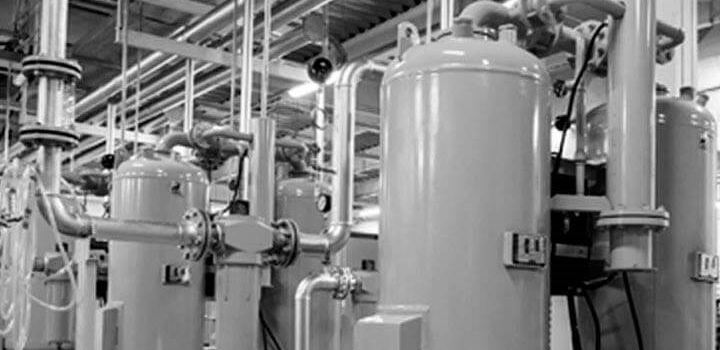Compressed air surveys evaluate and document system components, run-times, pressures, uses, and losses in order to identify areas for system improvement. Our capabilities for leak detection include compressed air, nitrogen, propane, argon, medical air, etc. Survey reports also include a full economic analysis, calculated costs, and recommendations for system improvements.
Evaluation
We conduct an initial “walk-through” system evaluation to identify & visually tag any obvious problems such as loud leaks or damaged piping. We document any misuse of air caused by open valves, rags placed over pipes or any unattended equipment. Leaks are marked for identification with a fluorescent paper tag. Each leak is identified with an American Plant Maintenance tag.
If plans are not available, our engineers start at the compressor & work outward to locate leaks. If plot plans are available the plant will provide a print of the compressed air system & plot plan that APM can utilize to record & map air leaks. The purpose of the plot plan is to help the fitter locate any identified leaks.
During the evaluation we will check all drain traps, quick connection points & other usage points. We will determine the best route for inspection which will help identify leak locations & make them easier to find for repair.
Survey
We will document leak locations, applications and pressures as well as any comments pertaining to any existing installations. We will start at the compressor / supply side & end at the point of use. Utilizing ultrasound technology, we will scan for any compressed air (gas) leaks & identify them such as Compressed Air, Oxygen, Argon, Nitrogen, Medical Air & Steam).
Results
After the completion of the survey we present two bound copies & an electronic copy of our findings. Compressed air applications & specific recommendations for station improvements are also included. All leaks are documented with a leak number (for identification in the report), type of gas, applications, location description, leak size in Cubic Feet per Minute (CFM), and note if repairs were made during the survey. We provide recommendations for better efficiency & specific description of the leak.
We provide an annual savings analysis for each type of leaking compressed gas & a return on investment calculation. This calculation is based on the estimated costs associated with energy usage and compressed air (gas) loses
For more information on how our team can help your facility maintain its compressed air system, please contact us, or visit our clients page to see examples of our work.


